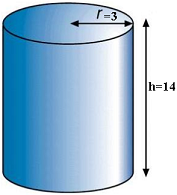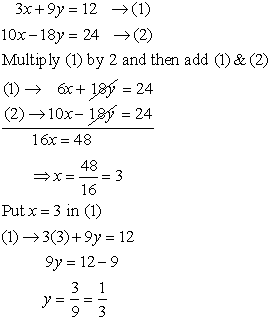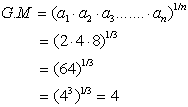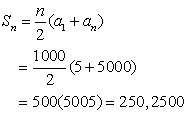Find the answers of all question at page 6
Question (1) following the passage refers to the
numbered sentences in the passage. Answer the question by choosing the best
alternative using logic and organization.
when your station goes on the air and stay there
without a book, magazine, newspaper, or anything else to distract you.
1.
The word inferior
in sentence 1 should be
A.
Left as it is
B.
Changed to worse
C.
Changed to the
best
D.
Changed to
anterior
E.
Changed to better
Each of the
following questions consists of a sentence with all or part of the senten e
underlined. Select one phrase that has the same or nearly the same meaning as
the original and, follows the requirements of standard written English.
2.
There is a small
number of apples still remaining on the tree.
A.
is a short amount
of
B.
is a small amount
of
C.
are very few
D.
is very few
E.
were very few
Read each group of sentences, then choose the
best answer to the question or the best completion of the statement.
3.
I like Oliver
Twist better than Huckleberry Finn. Dickens is better writer than Twain.
What is happening in the sentences?
A.
A comparison is
made in terms of British and American authors.
B.
A conclusion is
drawn on the basis of opinion.
C.
A conclusion is
drawn on the basis of fact.
D.
A comparison is
made in terms of growing up in England or America.
E.
A relationship is
drawn between the writing style of Dickens and Twain.
Read the passage
to answer questions 4-7
At the turn of
the twentieth century, people's attitudes toward money were far more
conservative than they are today. Borrowing and being in debt were viewed as a
moral failing, almost as a disgrace. Thrift and saving were highly prized, and people
who needed to borrow to make ends meet were seen as
careless,
unreliable, or extravagant. The focus in the economy as a whole was on
developing large corporations like railroads, oil companies, and other
companies that produced basic goods and services.
Then, in the
1920s, the economy changed. A huge network of banks and financial institutions
developed, helping money to move more quickly and easily through the economy.
At the same time, the economy was increasing its focus on consumer goods—
clothing, cars, household appliances, and other things that individuals buy. To
help promote the sale of these items, consumers were encouraged to buy on
credit. If they could not afford an item right away, a store or a bank might lend
them the oney, which they could pay back in installments.
With the development of consumer credit and
installment purchases, people's attitudes toward debt and spending changed. The
model citizen was no longer someone who was thrifty, buying only what he or she
needed. People were respected less for being thrifty than for knowing how to
use their money to buy as many things as possible— an attitude that persists at
the turn of the twenty-first century.
4.
According to the
passage, which of the following is NOT a belief that was commonly held in the
early twentieth century?
A.
Owing someone
money is a moral failing.
B.
People who save
their money are respectable.
C.
People who buy as
many things as possible are respectable.
D.
People who borrow
money for necessities are careless and unreliable.
5.
What helped money
move more quickly through the economy in the 1920s?
A.
The growth of
railroads
B.
The growth of
banks and financial institutions
C.
The rate at which
people paid back their loans




 is a sign of boredom, as smile is a sign of amusement.
is a sign of boredom, as smile is a sign of amusement. means to examine/look carefully. So, scrutinize is the higher degree of observe, as doting
means to examine/look carefully. So, scrutinize is the higher degree of observe, as doting  (an extreme love for sb/sth) is the higher degree of fond
(an extreme love for sb/sth) is the higher degree of fond  (love for sb/sth).
(love for sb/sth). means enemy. Hence, friend is the opposite.
means enemy. Hence, friend is the opposite. means fraud. Hence, genuine is the opposite.
means fraud. Hence, genuine is the opposite. means something not central (for example, side-business). Hence, central (main) is the opposite.
means something not central (for example, side-business). Hence, central (main) is the opposite. means shyness (or shy). Hence, confident is the opposite.
means shyness (or shy). Hence, confident is the opposite. means to incite. Hence, quash
means to incite. Hence, quash  (to suppress or to put down) is the opposite.
(to suppress or to put down) is the opposite. means inborn (what you have when you were born).
means inborn (what you have when you were born). means to desecrate something holy.
means to desecrate something holy. means belief. Hence, dogma
means belief. Hence, dogma  means sociable.
means sociable. means opponent.
means opponent. means honesty.
means honesty. means right (or legal rights).
means right (or legal rights). means restless or uneasy. So, easy is the antonym.
means restless or uneasy. So, easy is the antonym. means wasteful (who spends too much). So, frugal
means wasteful (who spends too much). So, frugal  (economic or one who spends with care) is the antonym.
(economic or one who spends with care) is the antonym. is made up of stars. And, archipelago is made up of islands.
is made up of stars. And, archipelago is made up of islands. (non-professional or unpaid worker) works without being paid. So, indifferent to
(non-professional or unpaid worker) works without being paid. So, indifferent to  (not interested) in fame and money is the best choice.
(not interested) in fame and money is the best choice. (A) 384 cm3
(A) 384 cm3



 NOTE: There are 1000 terms from 5 to 5000, so n = 1000.
NOTE: There are 1000 terms from 5 to 5000, so n = 1000.


